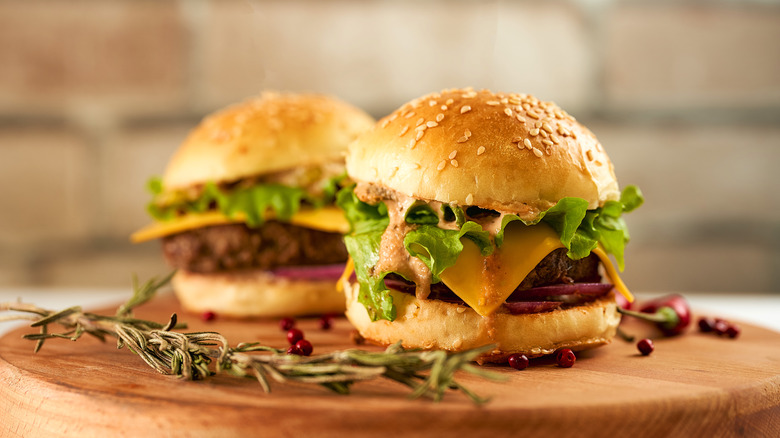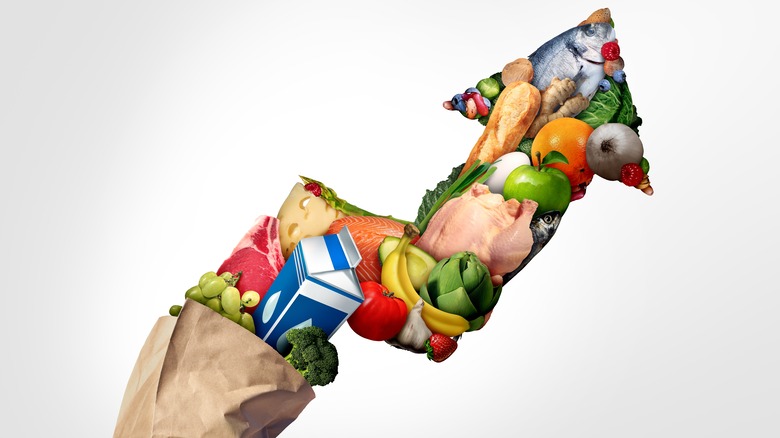Even Your Favorite Fast-Food Sandwiches Can't Keep Up With Inflation
When COVID-19 swept through the globe two years ago and forced restaurants, bars, and fast food chains to close their doors, it was a global catastrophe that most people hoped would end swiftly. But just as a sense of normalcy has begun to return, with restaurants filling back up with happy customers, data released by the U.S. Bureau of Labor Statistics has indicated another major problem: There's a current food inflation crisis with little relief in sight, as the country is facing its largest 12-month inflation hike since 1981.
Inflation has risen by 9.1% since last year, meaning that fuel, housing, medical care, and vehicles are costlier now than they've been for decades. In addition to the other categories in the Consumer Price Index, food costs have increased by 10.4% this year. Inflation's effects can be seen throughout grocery aisles: According to Datasembly, baking goods are up by 7.6% this quarter, snacks by 7.5%, and dairy and eggs by 6.9%. Although the increase in food costs is bad news for all consumers, it's also a challenge for restaurants, who are having a hard time keeping up with rising ingredient costs.
The ingredients for fast food items just got costlier
Inflation isn't really sparing any foods, but certain items are taking a harder hit than others. The current economic crisis is especially disappointing for chicken sandwich lovers, as prices for chicken, flour, and oil — the three key ingredients needed to make fried chicken — are all up by about 20%, according to Bloomberg. The increases are so dramatic that both local restaurants and fast food giants are having a tough time selling signature menu items the way they used to.
CEO of East Coast-based Atomic Wings, Zak Omar, told Bloomberg that despite raising his restaurants' menu prices by 25% in early 2022, the chain is still struggling to make profits thanks to the increasing cost of chicken. He doesn't see further increases in menu prices as a viable option. "You're not going to raise it to $20 for a 10-piece chicken...how much can a consumer pay?" he said. The CFO of Yum! Brands Inc., which owns KFC, voiced similar concerns about not wanting to lose customers by hiking prices.
Some chains are finding other ways to make up for higher food costs. Burger King, for example, announced earlier this year that it was reducing portion sizes and discontinuing certain discounts to keep up with rising inflation, per Business Insider. As fans of the chain may already know, 10-piece chicken nuggets are down to eight, and the famous Whopper is no longer on the discount menu. Fans will only have to wait and watch to see if more fast food chains follow in BK's steps.

